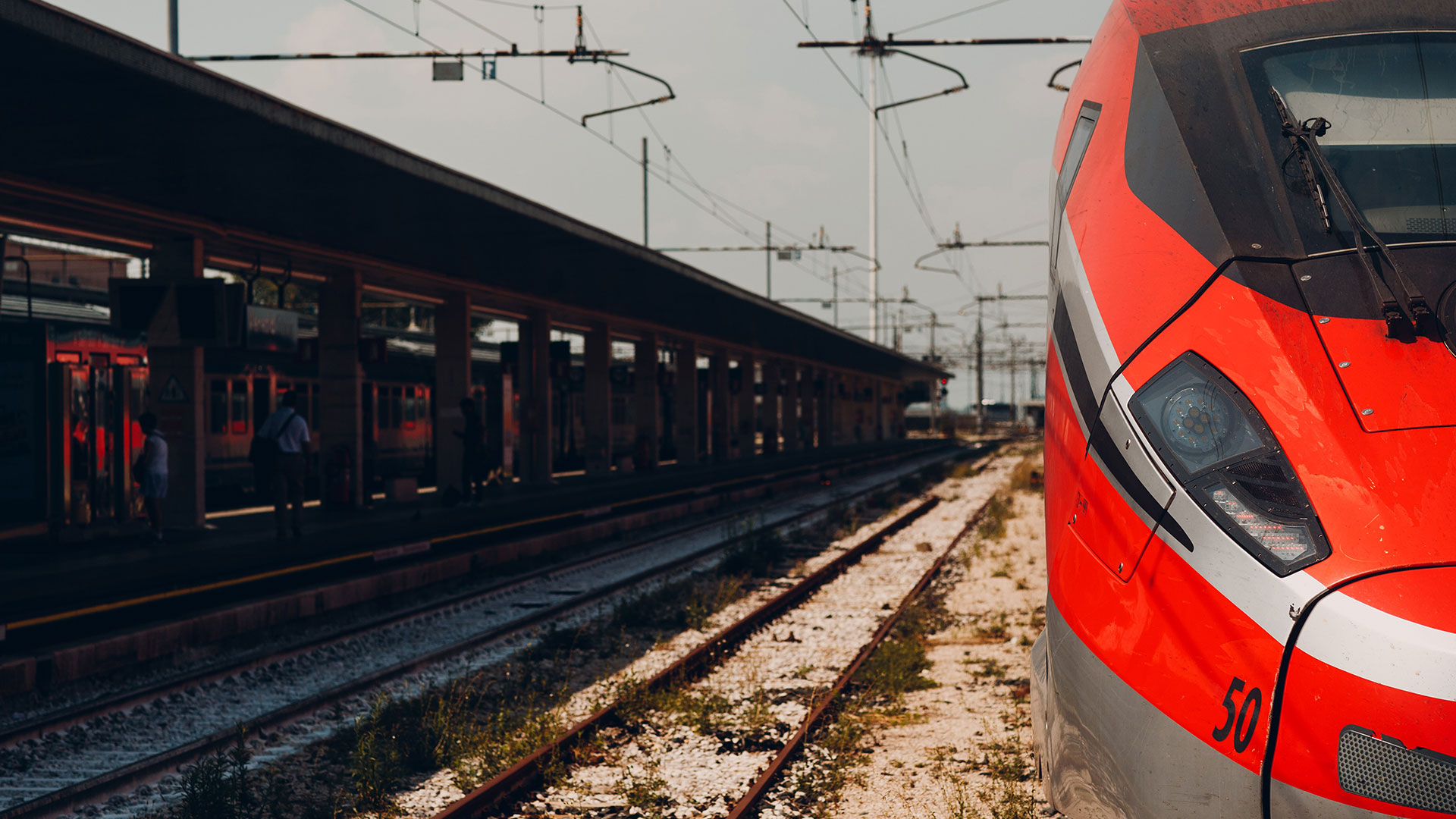
Additive Manufacturing in the Railway Industry
The railway industry demands efficient and precise production solutions, especially in managing spare parts and fleet maintenance. In this context, additive manufacturing proves to be a technology that meets these needs. A concrete example is the collaboration between Hitachi Rail and Roboze, which leverages the ARGO 500 HYPERSPEED platform for the production of high-performance railway components.
The Production Requirements of the Railway Industry
The railway industry is characterized by extremely stringent production demands, driven by the need to keep a vast fleet of vehicles operational under diverse environmental and usage conditions. Train production and maintenance require spare parts that are reliable, durable, and readily available.
Traditional production methods, such as mechanical machining, present several limitations in terms of lead times, costs, and flexibility. Train components are often specific and require lengthy production times, especially when dealing with non-standard or discontinued parts. Managing inventory demands large investments, impacting the ability to respond quickly to unexpected breakdowns or maintenance.
Additive manufacturing emerges as a strategic option to tackle these challenges. It offers greater flexibility, reduces lead times, and significantly lowers overall operational costs. Specifically, industrial 3D printing enables the production of custom and on-demand components, optimizing the entire supply chain.
Operational Advantages of 3D Printing in Railway Production
Additive manufacturing enables the production of complex components with a high level of customization and reduced lead times. Unlike traditional techniques, industrial 3D printing allows parts to be created directly from a digital model, eliminating numerous intermediary steps and lowering production costs. This approach enhances a company's ability to quickly respond to critical situations, such as urgent repair needs.
One of the key operational advantages of 3D printing is the on-demand production of components, eliminating the need to maintain large inventory stocks. In the railway sector, this translates into reduced storage costs and improved supply chain management, ensuring spare parts are available only when truly needed. Additionally, the design flexibility of 3D printing allows for the creation of complex geometries, optimizing component performance and reducing the overall weight of vehicles.
For more insights on how 3D printing can improve efficiency and lower operational costs in the railway industry, download the dedicated on-demand webinar.
The Collaboration Between Roboze and Hitachi Rail
A real-world example is the collaboration between Hitachi Rail and Roboze, which began in 2024 to optimize the production of railway spare parts through industrial 3D printing. Hitachi Rail selected Roboze’s ARGO 500 HYPERSPEED platform to produce high-performance components, utilizing advanced materials like ULTEM™ 9085 and Carbon PEEK. These materials ensure mechanical strength and thermal stability, which are essential for critical railway applications.
The collaboration has enabled Hitachi Rail to significantly reduce production times and costs compared to traditional methods, improving overall operational efficiency. In addition to providing the ARGO 500 HYPERSPEED platform, Roboze offers continuous technical support, with specialized engineering consultations at their facilities in Naples and the new digital factory in Washington County, Maryland.
Read the official press release by clicking here.
How 3D Printing is Revolutionizing Railway Applications
The applications of 3D printing in the railway industry are numerous. One of the key benefits is the production of high-performance spare parts, which can be made on-demand, reducing train downtime and improving inventory management. Components made from advanced materials like ULTEM™ 9085 and Carbon PEEK not only offer greater strength and durability compared to traditional materials but also help reduce the overall weight of vehicles, leading to improved energy efficiency.
Another significant use is the creation of functional prototypes, allowing companies to quickly test new designs and technical solutions before moving to large-scale production. Customizing components for specific needs, such as structural adaptations or aerodynamic optimizations, is another advantage of additive manufacturing.
In conclusion, industrial 3D printing not only allows companies to respond more rapidly to operational demands but also enables the development of advanced, custom design solutions to optimize production processes.
If you want to learn how industrial 3D printing can improve the efficiency of your railway company, contact our experts for personalized consultancy.
